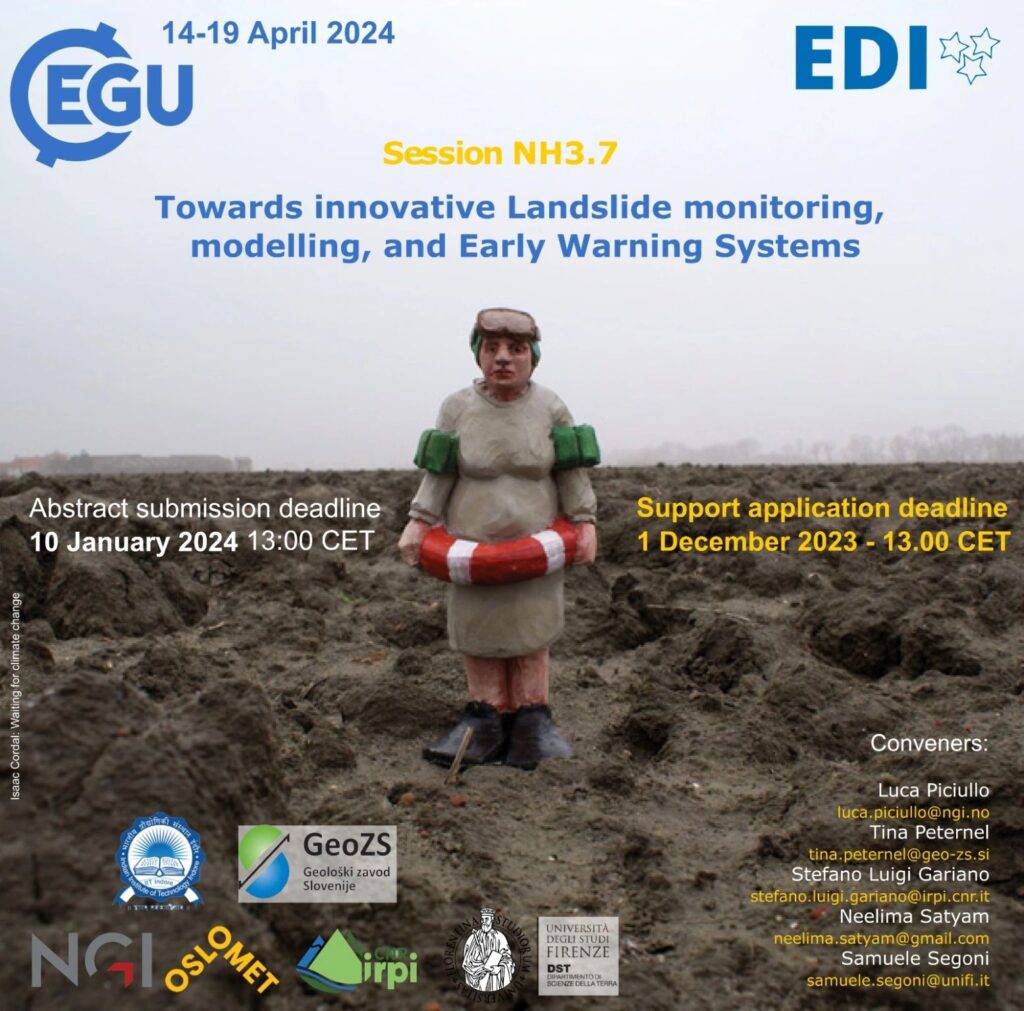NEWS received from
Luca Piciullo (NGI, Norway)
The call-for-abstracts of EGU General Assembly 2024 is open!
#EGU24 will be held in Vienna, Austria, and online on 14-19 April 2024.
Don’t miss the chance to submit an abstract to our session entitled Towards innovative Landslide monitoring, modelling, and Early Warning Systems!

Contributions addressing the following topics are welcome:
– conventional and innovative slope-scale monitoring systems for early warning purposes
– conventional and innovative regional prediction tools for warning purposes
– innovative on-site instruments and/or remote sensing devices implemented in LEWS
– warning models for warning/alert issuing
– operational applications and performance analyses of LEWS
– communication strategies
– emergency phase management
The abstract submission deadline is 10 January 2024, 13:00 CET.
More info at: https://meetingorganizer.copernicus.org/EGU24/session/48551
Conveners:
Luca Piciullo,
Tina Peternel,
Stefano Luigi Gariano,
Neelima Satyam,
Samuele Segoni
